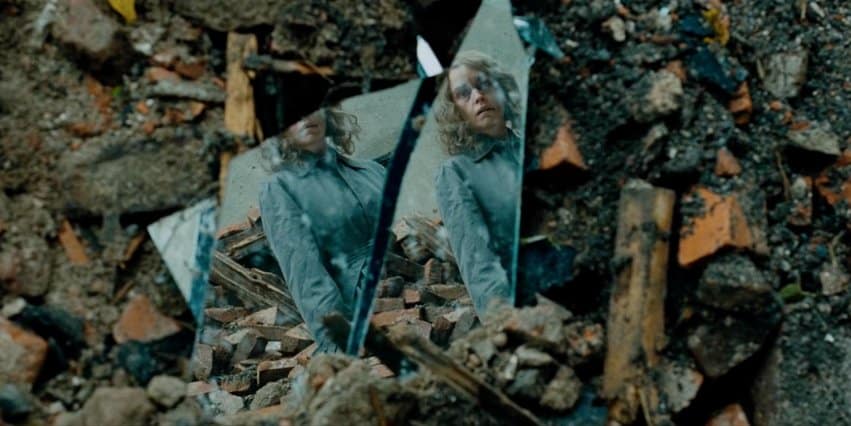15 Short Film Cliches to Avoid
1. Introducing Characters as They Wake Up
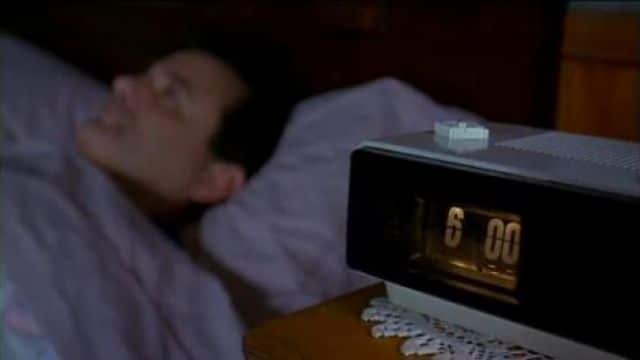
Whether it’s the annoying alarm clock they want to snooze or startling awake from a nightmare, introducing your protagonist as they wake up is perhaps top of the list of short film cliches to avoid. Not only is this overdone but it also often fails to give any insight into your character.
It might seem fitting to start your film as your protagonist starts their day. But unless there is something different or unique about their morning routine, try and use a more interesting piece of action to introduce them.
You could have a lot more success introducing them in the middle of an action or conflict that reveals something about them. This could still be at the start of their day. Perhaps, for example, it could be an argument with a barista or an issue with their train ticket. But by thrusting your protagonist into a more conflict-ridden scenario, you’re wasting no time in setting up who this character is.
So avoid this cliche so no one hits the snooze button on your short film before it’s even started.
2. Overly Ambiguous Endings
It’s also important not to end your short film with a cliche. This is particularly true of the overly ambiguous ending. Leaving the audience pondering over what happened isn’t always the intellectual or philosophical conclusion that you perhaps want it to be. It can, on the contrary, come across as lazy.
To be done well, ambiguity should be a central theme driving the film. However, you, as the filmmaker, must know the reality. If you don’t fully understand the ending of your film the audience will know it.
The same also goes for cliffhangers. Story endings should be surprising but inevitable. And if you’ve told your story properly then the audience should be able to interpret what really happened.
So consider moving away from the dramatic cliffhanger or the deeply ambiguous ending and simply give your short film a well-rounded, thought-provoking conclusion that does the story justice.
3. The Film Took Place in Someone’s Head
Whether it’s a dream, a drug-induced hallucination, or a mental breakdown, having a film take place in someone’s head is usually not the ‘mind-twisting’ effect that some filmmakers wish it to be.
This is especially a cliche when it is revealed at the end as a big twist. It can come across as a cheap trick. Much like a cliffhanger, it suggests that the filmmaker wanted an interesting ending but didn’t necessarily set their film up to have one.
If the whole premise is revealed to be fake then the audience has little reason to care about the film anymore. They can’t truly reflect back on the plot and characters because there are no real-world consequences to this revelation.
Contrast this to Inception, one of few films where this open-end is plausible and set up well. The audience can reflect on what they’ve seen and debate what clues in the film might reveal answers. That’s because the entire film has set up this premise. The concept of perceptions of reality and dreams are a part of the entire plot. They’re not used as a last-minute get-out-of-jail-free card.
So if you’re dead set on using this device for your short film, make sure it’s baked into the very concept and essence of it, to begin with. Don’t just rely on it to give your short film the distinctive twist it needs to stand out.
4. Shower or Toilet Scenes
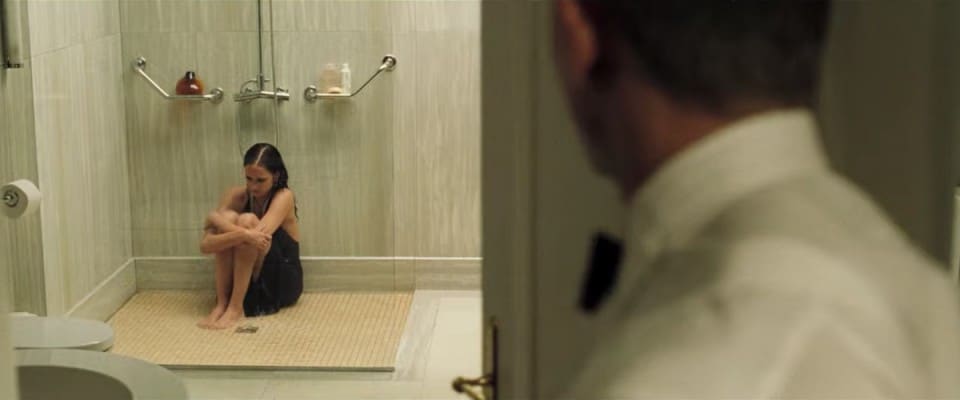
Another common short film cliche is to have a character either in the shower or on the toilet. These scenes are habitually used to demonstrate the film’s edginess.
- For example, a scene with the character on the toilet, particularly a female character, will typically be deployed to demonstrate the warts and all approach this film has to its characterisation.
- A scene in the shower meanwhile will often be used to illustrate a moment of vulnerability for the character. Often this is a moment where the character cries or lets out the emotion bearing down on them.
These devices are lazy shortcuts to characterisation and superficial methods of portraying a film’s edginess. They lie in place of actual characterisation and actual boundary-breaking.
So if falling back on these cliches, try and challenge yourself to think about how you can portray meaningful characterisation or illustrate your film’s rawness in a more creative, original manner. A sad shower scene is an all too familiar setting for a character letting it all out. Whilst seeing a character on the toilet is no longer as ‘edgy’ as it may once have been.
5. Black and White
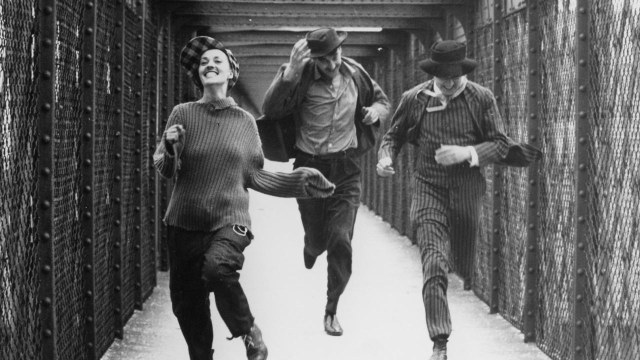
Despite the invention of technicolour, many filmmakers make the conscious choice to have their films in black and white to great effect.
This could be to add an extra layer of meaning to the film such as the famously black and white Schindler’s List. Or it could be to reproduce the atmosphere of an early classic like Young Frankenstein.
However, inspired by the film noir and french new wave movements, it’s become very common for filmmakers to think that black and white automatically equals art and that using it will give their film a certain mystique.
This has unfortunately given the style a reputation for being pretentious and cliche, especially in the context of short films. Its use can come across as uninspired and unoriginal, particularly as a short film cannot have the same depth as a feature and therefore potentially does not justify the use of black and white as much.
Does the film being in black and white meaningfully support the characters, plot and/or themes? Or is it just a way to make the film look distinctive? As with all potential short film cliches, you must question your use of black and white as it pertains to the story.
6. The Elderly
A common short film cliche is to use older age as a shortcut for profound themes. Many short films use an older protagonist or supporting character as a way to elicit emotion and empathy. Think the montage scene in Up without the context and story that comes after it.
These elder characters are often accompanied by a younger character. For instance, a young character might unexpectedly meet an elder character (say by kicking a ball over their fence into the neighboring garden). Then, expectations will be surpassed via this interaction, with the younger person learning something from the elder and vice versa.
This is a particularly jarring conceit given the relative youth of many short film-makers. Old age is often deployed as a way of writing a story that touches meaningfully on heartbreak, grief or mortality. Many of these stories deal with Alzheimer’s and Dementia. But in solely associating old age with such maudlin themes, filmmakers miss the opportunity for originality. It’s quite rare, after all, to see relatively upbeat depictions of old age.
So try and avoid reaching for themes around old age as a way to give your short film meaning and emotion. Instead, interrogate the meaning and emotion you want to elicit in the first place. Then, see if there might be a more original and creative way to get there.
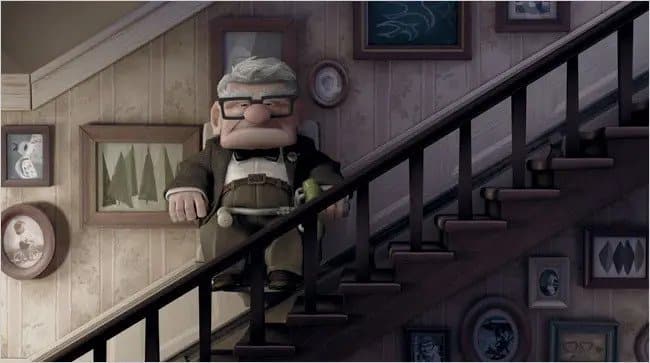
7. Grief
To a similar point, a lot of short film-makers decide to tackle dark and heavy subjects. However, it can be hard not to overgeneralise or simplify these emotions.
It’s easy to think that a film about death and grief automatically makes it ‘deep’ and ‘edgy’. But it’s also easy for this to become a cliche in the way it’s portrayed. Of course, you shouldn’t avoid this emotion as a whole. But a protagonist mourning and moping around, or attempting to move on with their life, is a somewhat overused conceit for a short film.
Ultimately, we all know and can relate to the sadness of death. However, it’s the reactions and tropes in dealing with this that we have probably seen hundreds of times before. So instead, consider other ways that people react to death. Grief can be darkly funny, awkward or bring out surprising aspects of one’s personality.
Looking at grief from different perspectives can take you away from the cliche and provide a fresh representation of grief as a central theme.
8. Briefcase of Money
The crime genre is rife with cliches. And a big one to avoid is having your film focussed around a container full of money that needs to be delivered, stolen, or found to drive the narrative. This is especially true if the container is a briefcase.
A briefcase isn’t quite the homage to old gangster films many may think it is. It’s probably a homage to a film that was, in turn, paying homage to these films. Plus, these days a briefcase full of money is not only a movie cliche but probably quite unrealistic and impractical.
Instead, try something more original and up-to-date. Perhaps the money is in a fast-food delivery carrier or tied to an NFT. A simple modernisation can make your film more interesting and less cliche. This is all about pulling your references from real life rather than films and TV.
It can be hard to stop your brain from falling back on the cinematic language you’ve been used to since you first started watching films. But doing so will allow you to step onto the path of originality and away from cliche.
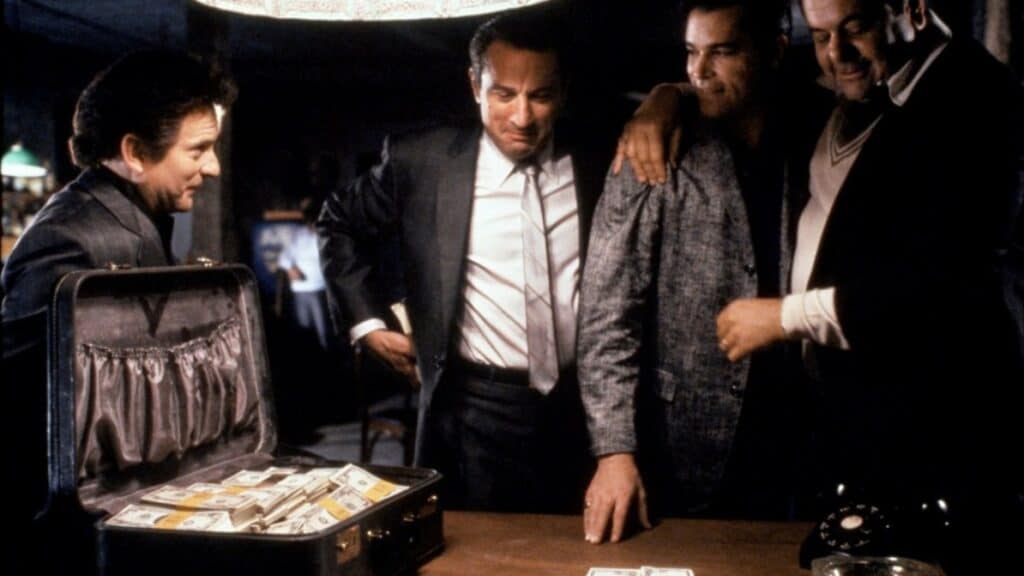
9. Violence
Style over substance can be a common flaw in lots of films. And when making a short film it can be easy to overcompensate for the condensed time in this way.
Violence is an easy way to create drama in a short amount of time. However, ramming your film full of action and violence can be a cliche, especially when it tries to make up for a lack of plot or character development.
If you are a fan of action, it can be easy to mistake your enjoyment for a love of intense scenes and gory fights. However, it was most likely the story and the characters that drew you into that film and not the gratuitous violence.
Remember that stakes don’t need to be life or death for your film to be tense or exciting. So try and avoid a natural inclination towards action and violence in order to cram as much excitement into your short as possible. Instead, find other more imaginative ways to depict high stakes and excitement.
10. Exposition Overload
Films are ultimately a visual medium. And an abundance of dialogue is a typical short film cliche and often a clear display of an amateur screenwriter, especially when it’s the only thing moving the plot forward.
A lot of short film-makers think an interesting format is two characters simply having a conversation for the whole film; in a car, locked in somewhere, or even in a therapy session.
However, this format can easily become stagnant. With nothing at stake and no visual action occurring the film can easily fail to engage the audience.
Moreover, it often feels demonstrative of a screenwriter who is yet to grasp dialogue’s potential to be one part of moving the plot forward, instead of the only method. When first writing dialogue, one can be swept up in the rhythm of it. But an expert screenwriter knows that dialogue is a weapon to wield carefully and sparingly.
Well-written dialogue can be incredible. But it takes a very skilled screenwriter to write a wealth of dialogue that remains entertaining and purposeful throughout a whole scene or film. So if you’re going to rely on dialogue, make sure it can carry the load.
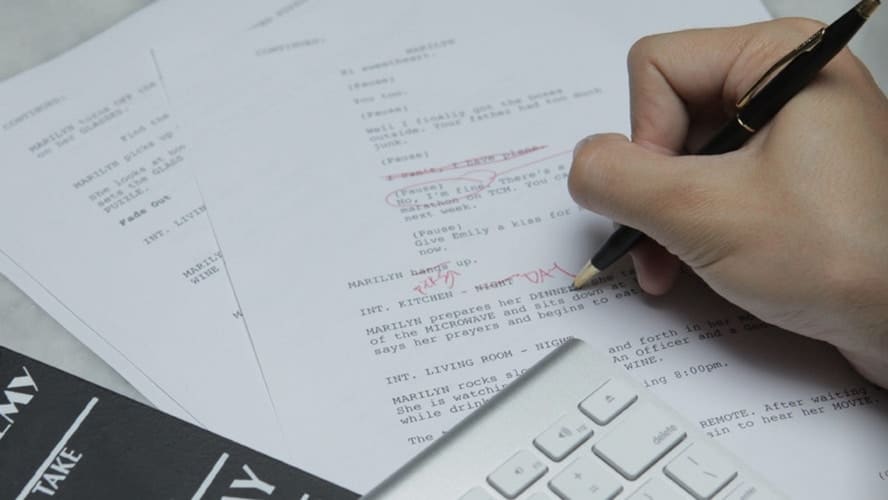
11. Intentionally Slow Pacing
Another pseudo-artistic technique in short films is slow pacing and slow scenes. Of course, there is nothing inherently wrong with this. However, the belief that slow equals dramatic has caused it to become something of a cliche.
A long, lingering shot of your character slowly wandering around may be visually interesting. But does it fit in your film or has it just been stuck in there to test your audience’s patience and demonstrate your film’s artistic merit?
What does it tell us about the film’s story? What does it tell us about the film’s themes? As with avoiding all short film cliches, it’s important to interrogate your use of this device as it pertains to the story. Are you employing this technique just because you’ve seen it in your favorite films? Or does it add something important and meaningful to the story at hand?
Embrace the natural flow and pacing of your film, making sure the action and story are moving forward at a rate that is appropriate to its overall purpose and intention.
12. The Drone Shot

This is a more recent short film cliche and perhaps even just a trend. But the novelty of drones has over-saturated films with repetitive birds-eye-views so much that it has unfortunately become a cliche.
Don’t sacrifice your narrative just so each scene can be cut with a gratuitous shot of a sweeping landscape. They are often unnecessary and too many could ruin your story’s flow and take the audience out of its intimacy.
Of course, it can be an amazing creative tool. But make sure the shot adds something visually to your story, and also that it matches your other shots so your film remains cohesive.
The novelty may well die down and drone shots will likely lose their notoriety. For now, however, if your short film is full of drone shots, the one thing the audience will know about you as a filmmaker is that you’re a filmmaker with a drone.
13. The Nature Shot
Much like the drone shot, the use of nature shots can be beautiful. But it’s an overdone technique and a short film cliche in the context of how these shots act as cutaways. Cutting to a close-up of a tree, flower, or raindrop does not magically make the scene it followed more meaningful.
If you want nature to be entwined with your story then there needs to be interaction. Place your character in nature, for instance. Or have them respond to or interact with their surroundings.
This way you have the shots but there is meaning behind them and the audience is learning something about the character. You are moving the story forward whilst adding in a striking landscape or nature shot. It’s, of course, important to use the context to flesh out your short film’s visuals. However, you must keep your chosen shots cohesive and maintain a deeper meaning beyond their pretty appearance.
14. The Reflection Shot
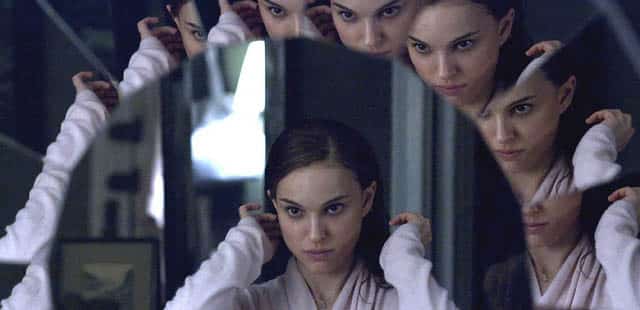
Who am I? What have I done? Who have I become?
These are all the potential questions a character is asking themselves during the classic reflection shot.
This could be a simple shot of both the character and their reflection. Or it could be something a bit more ‘edgy’, where the audience doesn’t know they’re watching the reflection until the camera pans out.
Unfortunately, this shot has become too popular as a way to point out that a character has internal conflict. Its pseudo-psychological function has become a bit of a cliche.
A character’s fragmented mind doesn’t always need to be symbolized by looking in a broken mirror, or a stone being thrown into their reflection in a pond.
So try and get creative and original in demonstrating a character’s fractured mind. What are the moments that force reflection in your own life? How often do you find yourself staring into a broken mirror and pondering your fractured reality?
15. The Compartment Shot
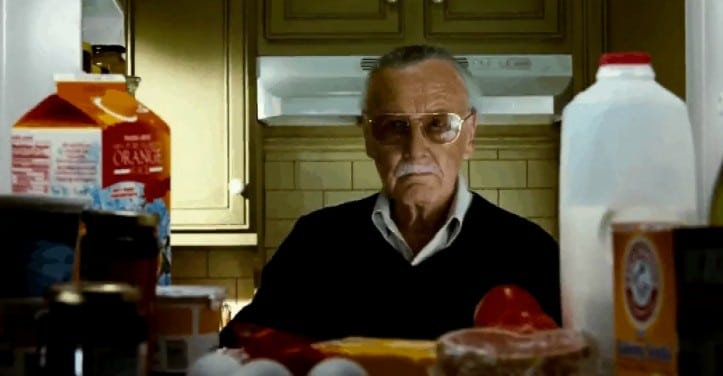
The compartment shot is where we see the character from the perspective of the container they’re using.
Think of a character rummaging in the fridge, noticing something in the rubbish bin, or finding something in the boot of their car.
The angle is effective in giving the audience an unobstructed view of the character’s face and the contents of the container. However, despite its effectiveness, its overuse has unfortunately made it a short film cliche.
It’s a particularly common device in short films as it seems to (or at least once did) represent the filmmaker’s ingenuity in creating distinctive shots and making the most of their limited resources. But its overuse now means it does the opposite; illustrating a lack of imagination and ingenuity on the filmmaker’s part.
Overall, steering clear of these short film cliches will give you the opportunity to create something original and imaginative. This will, in turn, make your short film that much more successful.
When seeking to write a story that represents your original voice, try and forget the films and TV series that have formed your cinematic language. Instead, reach into the crevices of the story at hand and pull out the devices and techniques that best represent it.
Enjoyed our list of short film cliches? Get on the path to originality with our ways to generate short film ideas.
– What did you think of this article? Share It, Like It, give it a rating, and let us know your thoughts in the comments box further down…
– Struggling with a script or book? Story analysis is what we do, all day, every day… check out our range of script coverage services for writers & filmmakers.
This article was written by Tallulah Allen and edited by IS Staff.
Get *ALL* our FREE Resources
Tackle the trickiest areas of screenwriting with our exclusive eBooks. Get all our FREE resources when you join 60,000 filmmakers on our mailing list!

